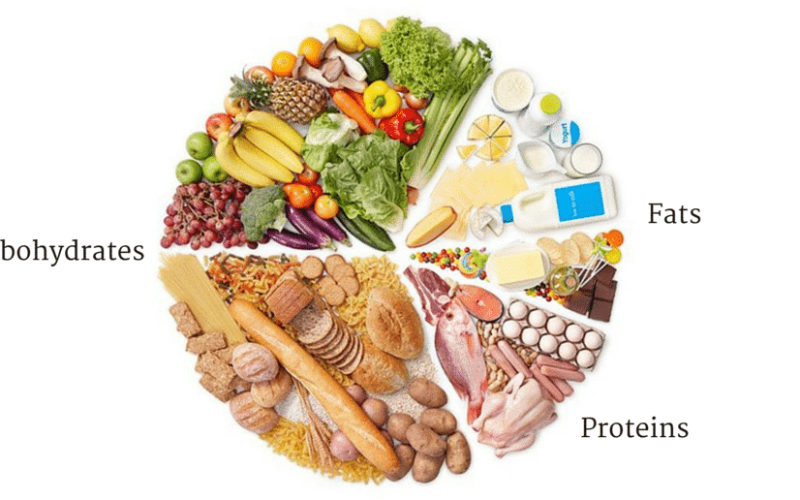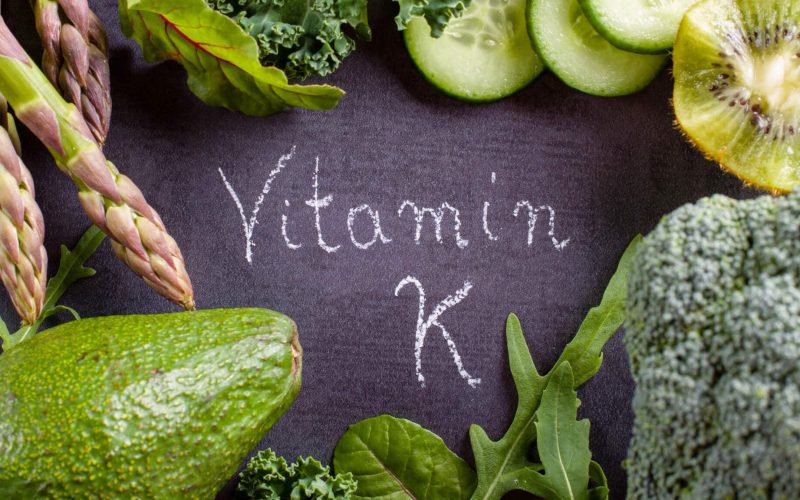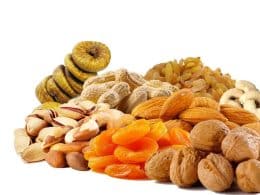Macronutrients – or macros for short – are critical nutrients required by our body daily and in large quantities to grow, develop and continually function.
There are three primary macronutrients – carbohydrates, proteins and fats. Our body also requires other nutrients, like essential minerals and vitamins.
Though required in trace amounts, these other nutrients – known as micronutrients – are also crucial in maintaining normal metabolism and growth.
However, they do not provide energy that the body needs in carrying out daily activities. The macros are responsible for the supply of energy (calories) and the building blocks of immune function, cellular growth and overall repair.
Getting the proper amount of each macronutrient is crucial in maintaining a stable mind and body. Each of them is needed in every activity from development and growth to sustaining circulation and feeding the brain with enough energy for cognitive performance.
The 3 basic macronutrients
Each of the three basic macronutrients affects our body in distinct ways. To be able to know the proper amounts of macros our body needs to absorb from our diet to function on a daily, it is important to understand the crucial role that each of them plays in the body.
1. Protein
Proteins are made up of amino acids commonly referred to as the building blocks of the body. They are called building blocks because they are responsible for the formation and maintenance of every living cell, organ, muscle tissue and almost all our body fluids.
The body reverse-process proteins to use as energy in the absence of glucose or carbohydrate (this process of conversion is called gluconeogenesis).
Proteins consist of 20 distinct amino acids, all of which must be present for our bodies to develop, maintain and repair themselves. Our body is capable of producing 11 out of the 20 amino acids on its own.
However, the other nine amino acids can’t be produced by the body, so they must be gotten from the food we eat. They are also known as the ‘essential’ amino acids and they include;
- Lysine,
- Valine,
- Histidine,
- Leucine,
- Isoleucine,
- Methionine,
- Threonine,
- Phenylalanine,
- Tryptophan.
Histidine, however, is distinct in that it is only required during early childhood. To get these amino acids, you have to consume different categories of protein.
Complete proteins
this category contains all 20 amino acids in proper amounts. Foods that fall under this category include;
- Meat (poultry, seafood and other meats),
- Dairy products (milk products and eggs), and
- Some plants (avocados, chia seeds, and quinoa).
Incomplete proteins
they are mainly gotten from plant sources and are tagged incomplete because they do not provide all 20 amino acids.
In order to get a complete does of amino acids from this category, you need to consume different plant-based sources together as complementary proteins. Foods under this category include;
- Nuts (almonds, cashew, pecan, walnut),
- Seeds (hemp seeds, flax seeds),
- Dark green vegetables (kale, spinach),
- Beans pulses and legumes.
Each gram of protein packs 4 calories of energy, so it is recommended that 10 to 35 percent of your daily calories should come from protein sources.
However, protein requirements vary. Some protein guidelines are based on activity level, age and gender. Some people may amp their protein consumption to achieve certain fitness or wellness goals.
2. Carbohydrates
Carbohydrates – or carbs – include fibres, starches, and sugars, and are the main source of fuel for the body.
They are a chain of simple sugars which the body breaks down into immediately usable energy (glucose) and sends them into the bloodstream.
Excess glucose is stored in the liver in the form of glycogen. They are also stored in the muscles sometimes but in little quantities. Carbohydrates can be found in two forms: Simple carbs and complex carbs
Simple Carbs
(monosaccharide and disaccharide) They provide the quickest form of energy as the body is able to metabolise them quickly.
They include the various forms of sugar like fructose (fruit sugar), glucose (blood sugar), lactose (milk sugar), and sucrose (table sugar) and can be gotten from food items like;
- Honey
- Table sugar
- Sweetened tea
- Soda and fruit juice
- Candy
- Milk
Complex carbs
(polysaccharides and oligosaccharides) It takes the body longer time to breakdown complex carbs to provide energy making it a more sustainable source.
They include cellulose, glycogen, and starch, and can be obtained from various grain products, whole fruits and veggies like;
- Apples
- Bread
- Carrots
- Cauliflower
- Millet
- Pasta
- Potatoes
- Rice
- Squash and Zucchini
Complex carbs are also great sources of fibre. This form of carbohydrate cannot be digested by our body.
Fibres play significant roles in regulating our cholesterol levels, weight loss, and digestive functions.
The United States Department of Agriculture suggests that carbohydrates should cover 45 to 65 percent of your daily caloric intake. Each gram of carbohydrate contains five calories of energy.
3. Fats
Unlike what most people think, fats don’t actually make you fat. In fact, 60% of our brain consists of fats.
Fats are the largest energy source among macronutrients, providing 9 calories per gram.
Dietary fats also play crucial roles in the building of body cells and tissues, they help absorb essential nutrients like vitamins A, D, E and K, controls body temperature, cushions and protects our body organs and acts as our body’s largest form of energy storage.
Dietary fats can be obtained in two forms; saturated and unsaturated fats.
Saturated fats
They are mostly gotten from meat and dairy products. These fats usually have a longer shelf life and are solid at room temperature.
Unsaturated fats
mono and polyunsaturated fats fall under this category and they are gotten from plant sources. they are considered the healthiest form of fats.
These fats have a shorter shelf life and they don’t solidify even when refrigerated. Like the ‘essential’ amino acids in proteins, fats also contain ‘essential’ fatty acids namely omega-3 and omega-6.
They are essential because our body cannot produce them on its own so we must get them from our diets. Dietary fats can be found in foods such as;
Saturated fats sources
- Fatty meats like pork
- Butter
- Cheese
- Full-fat dairy products
- Lard
- Unsaturated fat sources
- Almonds
- Avocado
- Dark Chocolate
- Coconut
- Nuts
- Seeds
- Fatty seafood (tuna, salmon)
- Plant-based oils (olive, flaxseed or coconut oil)
There’s also a third type of fat called trans fat. This is an unnatural form of fats made by hydrogenating polyunsaturated fat to make them more shelf-stable.
They are often used by manufacturers in prolonging the shelf life of baked goods like biscuits, cakes and cookies.
However, trans fat is unhealthy and sometimes referred to as ‘poison’ because they increase your level of “bad” LDL cholesterol. In light of its harmful effects, food manufacturers have begun removing trans fat from foods.
The guidelines suggest that fats should cover roughly 20 to 35 percent of your daily caloric intake. However, saturated fats shouldn’t cover more than 10 percent of your calories daily.
Bottom line
The bulk of energy used in the day to day functioning of our body comes from the three macronutrients; proteins, carbs and fats.
These macronutrients can be gotten from an array of food sources from fresh vegetables to baked goods. Getting adequate amounts of each macronutrient is essential for good health.
However, getting the exact balance that your body needs can be tricky. A good way to balance your macros is by following the United States Department of Agriculture’s recommendation for daily calories intake.
You can also plan your diets by using diet-planning systems like USDA’s MyPlate system or Harvard Health’s Healthy Eating Plate. These systems simply encourage you to plan your meals using a divided plate icon.
Roughly one-quarter of the plate icon is designated for fruits, grains, vegetables, and protein. A small icon is also available for dairy.
You should also consult your doctor or dietitian. They’ll be able to assist you in planning a suitable diet for you.
References;
- Macronutrients 101; Verywell Fit
- The three macronutrients and energy density; Heuser Health
- What are macronutrients? Their importance and best sources; Global Healing Center
- Macros and their nutritional information; Natural Balance Foods









